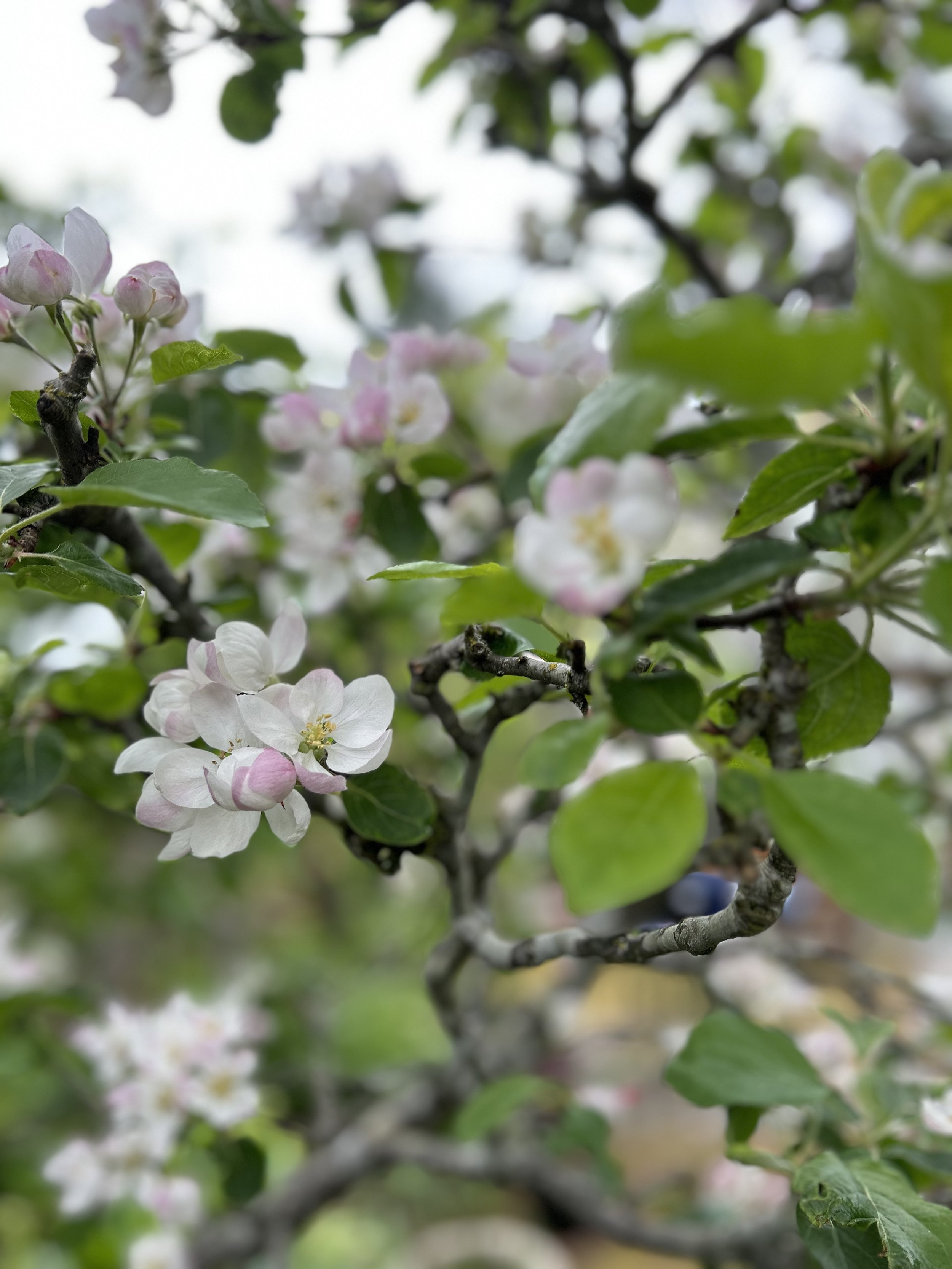(April 2025: I think I heard along the way that one is not supposed to edit or update blog posts, in order to let them reflect the time and context they originated from. Or maybe I made that up, just like a lot of the things I think! Anyway, this post is only lightly updated —because it’s still seems true to me, now, 20 years after I first wrote it)
(From February 2005) Though it's not officially Spring quite yet, the peonies are poking their deep red stems through the ground and the cherry trees are blooming, and you can feel the sap waking and rising.
"If I were to wish for anything, I should not wish for wealth and power, but for the passionate sense of the potential, for the eye, which every young and ardent, sees the possible."
--Kierkegaard
“…although it is not visible to you, the apple tree is already developing its fruit buds deep within its tissue the summer prior to the year in which the bloom becomes visible. Starting in about mid-June, the fruit bud tissue starts its development and differentiation. The process is completed by late March, shortly before bloom.”
–The BackYard Orchardist
This is the power of Wood and the realm of Growth—the ability to envision the possible far into the future, and to plan and enact its realization. In the Chinese 5-Element system, Wood energy pertains especially to Spring, the season of Hope. This phase follows the cold, dark, quiet stillness of Winter, when a world of concentrated invisible life bursts and blossoms and unfurls into visibility—into tender leaf and flower, into new-born breath and heartbeat—intensely fresh and full of possibility.
Other gifts of Wood, whose organic home in the human body is the Liver and Gall Bladder, are suppleness and flexibility, renewal and healing, discernment and decisiveness, initiative, motivation. Wood’s primary challenge arises when encountering immovable (or what just feel like immovable) obstacles to growth and desired action. The resulting stagnation of energy can result in feelings of frustration, irritability and anger, as well as bodily symptoms such as muscle spasm and cramping, headache, high blood pressure. Some important basic remedies for this kind of stagnation are playful and regular physical movement, and ample water intake to encourage circulation. And, paradoxically, the giving up of a certain kind of hope—the releasing of our attachment to a particular outcome, the letting go of the desire for reality to be other than it already is (and already changing).
During this season, imagine how we might strengthen and harmonize the gifts and power of the Wood element in ourselves and in the world. Some questions to consider are: How can I practice bending, without breaking, in the midst of the winds of change? How rooted am I, how flexible, how do I incorporate/embody healthy movement and healthy pausing? How well do I stand up for my self and others? What is my vision of the best possible present and future, and what strategy can I create for living into that vision and participating in the nature of change?
Czech statesman, playwright and poet Vaclav Havel said,
“Hope is a dimension of the soul…an orientation of the spirit, an orientation of the heart…It is not the conviction that something will turn out well, but the certainty that something makes sense regardless of how it turns out.”





